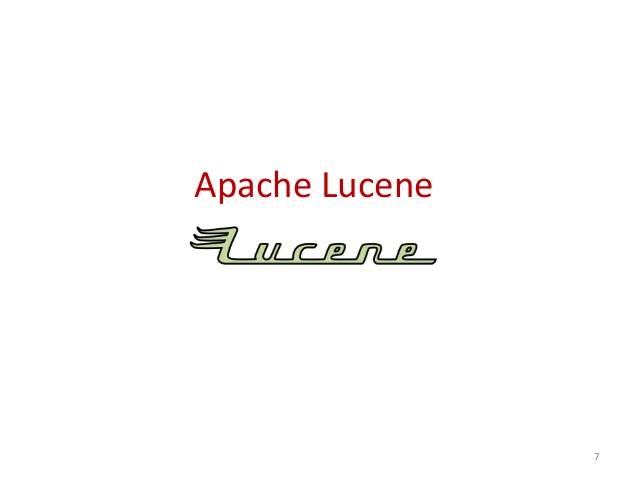
An index may store a heterogeneous set of documents, with any number of different fields that may vary by document in arbitrary ways. Lucene manages an index over a dynamic collection of documents and provides very rapid updates to the index as documents are added to and deleted from the collection. This cuts down on the size of an application at a small cost to the complexity of the build file. As of Lucene 4, the Lucene distribution contains approximately two dozen package-specific jars, e.g.: lucene-core-4.7.0.jar, lucene-analyzers-common-4.7.0.jar, lucene-misc-4.7.0.jar. The top-level package is, which is abbreviated as oal in this article. The Lucene API consists of a core library and many contributed libraries. Lucene has a highly expressive search API that takes a search query and returns a set of documents ranked by relevancy with documents most similar to the query having the highest score. Lucene provides many ways to break a piece of text into tokens as well as hooks that allow you to write custom tokenizers.
#Apache lucene indexing example series#
There are two ways to store text data: string fields store the entire item as one string text fields store the data as a series of tokens. Fields are constrained to store only one kind of data, either binary, numeric, or text data.

Lucene does not in any way constrain document structures.

A field consists of a field name that is a string and one or more field values. A document is essentially a collection of fields. It’s popular in both academic and commercial settings due to its performance, configurability, and generous licensing terms. Lucene OverviewĪpache Lucene is a search library written in Java. Most of this post is excerpted from Text Processing in Java, Chapter 7, Text Search with Lucene.
#Apache lucene indexing example how to#
Here’s a short-ish introduction to the Lucene search engine which shows you how to use the current API to develop search over a collection of texts. But, now the issue is, the elasticsearch is going through all the documents to fetch the list of unique values present in that index (confirmed by evaluating the response below). I got the list of unique values for my field. Somehow, I got the doc_values enabled and I’m trying to do term aggregation to solve same business problem. My business problem is “get all the distinct values/terms of a field (type: keyword)”.Īs you suggested, I can do with elasticsearch terms aggregation only when the field has doc_values enabled. Thanks for your quick reply Alessandro Benedetti. – You don’t need Indexing time boosting per field – You don’t need to boost short field contents The norms data structure will not be built – You want to use the Posting Highlighter.Ī fast version of highlighting that uses the posting list instead of the term vector. The posting list for each term will contain the term offsets in addition. – You do need to search in your corpus with phrase or positional queries. The posting list for each term will contain the term positions in addition.Ġ : 1 :, 1 : 2 :, 2 : 1 : – You do need scoring to take Term Frequencies in consideration

The posting list for each term will simply contain the document Ids ( ordinal) and term frequency in the document.

You don’t need score to be affected by the number of occurrences of a term in a document field. – You don’t need to search in your corpus with phrase or positional queries. The posting list for each term will simply contain the document Ids ( ordinal) and nothing else. You don’t need to search in your corpus of documents.


 0 kommentar(er)
0 kommentar(er)
